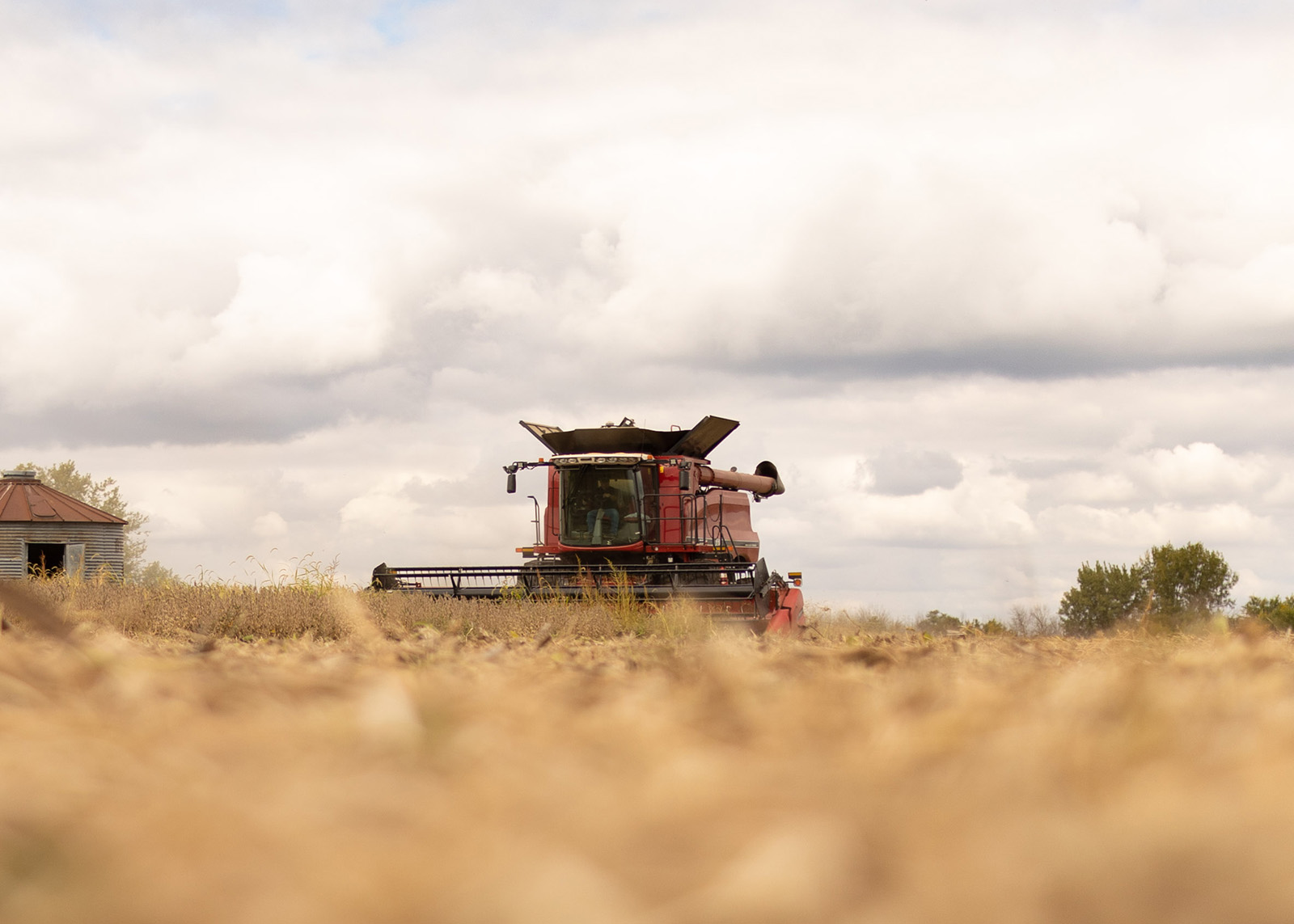
(Photo: Iowa Soybean Association)
Save money with 7 year-end tax planning tips
December 14, 2021
By Darcy Maulsby, Freelance Writer in Lake City
As the end of the year draws near, now’s the time for farmers to review current tax laws. As the Iowa Soybean Association works hard to ensure checkoff dollars are wisely invested, it’s imperative to maximize your other financial interests, as well.
“So much has changed in the past year, from the way Paycheck Protection Program (PPP) loans impact tax returns to new rounds of Coronavirus Food Assistance Program (CFAP) payments,” says Kristine Tidgren, director of the Center for Agricultural Law and Taxation at Iowa State University. “Knowing more about these issues will help you ask better questions as you work with your tax preparer.”
1. Taxation of COVID-19 relief for farmers and ranchers
While PPP and Economic Injury Disaster Loan (EIDL) advance proceeds are not income and don’t reduce deductions, CFAP payments are different. They are fully taxable, subject to self employment tax and should be reported as farm income, Tidgren says.
2. Child Tax Credit Expansion
This is part of the $1.9 trillion American Rescue Plan Act (ARPA) of 2021. For 2021 only, “qualifying child” includes children under 18. “The child tax credit is expanded from $2,000 to up to $3,000 per children between the ages of six and 17, and up to $3,600 for children under six,” Tidgren says. If child tax credits impact you, ask your tax preparer about the child tax credit phaseout, the advance child tax credit and child tax credit reconciliation.
3. Employee Retention Credit
This is a fully refundable payroll tax credit. “This tax credit can be very valuable if you file tax Form 943,” Tidgren says. This credit is in place for 2020 and 2021 (with different rules for each year). “It’s worth asking your tax advisor about the employee retention credit if you have non-relative employees,” Tidgren says.
4. New options for healthcare coverage in 2021-2022
For tax years beginning in 2021 and 2022, individuals can qualify for a premium tax credit to offset the cost of insurance on healthcare.gov for the amount of premium (second lowest-cost silver plan) that would exceed 8.5%. “Because many farmers and ranchers are self employed or owners of small partnerships or corporations for which insurance plans may be costly, they may benefit from purchasing insurance on the Marketplace,” Tidgren says. She shared the example of Tom and Kari, a fictional married couple from western Iowa who are 60 years old. Pre-2021, Tom and Kari had a modified adjusted gross income (AGI) of $70,000 per year. The monthly cost of the second lowest cost premium on the Marketplace is $3,324.96, so the cost would be $39,899.52 a year if they purchased the insurance. Before ARPA, they were not eligible for the premium tax credit (PTC) because their income was too high. In 2021 and 2022, however, Tom and Kari (whose AGI remains at $70,000) must pay only $5,950 a year if they purchase the second lowest cost silver plan. They are eligible for a $33,949.52 PTC and may receive it in advance, Tidgren says.
5. Bonus depreciation
The bonus depreciation rate for property placed into service after Sept. 27, 2017, and before Jan. 1, 2023, is 100%, notes Charles Brown, an ISU farm management field specialist. Ask your tax preparer about the laws regarding bonus depreciation on new property, used property and leased property. Also, note the distinctions between bonus depreciation and Section 179 deductions. “While pole barns, sheds and shops don’t qualify for Section 179, bonus depreciation can be used on these items,” Brown says.
6. Sick and family leave credits
Self-employed taxpayers may take a sick leave credit of 10 days for tax year 2021. This applies to days they were unable to work from Jan. 1, 2021, through Sept. 30, 2021, for COVID-19 illness or vaccinations received during the second or third quarters of 2021. Tidgren shared the example of the fictional, self-employed Jeremy, who runs a farm trucking business. During July 2021, Jeremy was unable to work for 14 days because he suffered from COVID-19. In August, he was unable to work for two days because he had to care for his 12-year-old daughter, who was sick from a COVID-19 vaccination. Jeremy’s net income on his 2021 Schedule C is $36,000. Jeremy will be entitled to a sick leave credit for 10 days and a family leave credit for six days (days in excess of 10 that he was sick and days he missed to care for a family member who suffered a vaccine-related injury). “After running the calculations, Jeremy will claim his $1,935 credit on Form 7202 when he files his 2021 return,” Tidgren says.
7. Deferred contracts
If your income was lower in 2021 and your expenses were higher, deferred contracts can help. “We can pull that 2022 deferred contract back into 2021 to raise your income,” says Wes Simpson, a certified public accountant and shareholder with Williams & Company in Spencer. He recommends having a few smaller deferred contracts for greater flexibility at tax time. Instead of having one, 50,000-bushel
contract, for example, separate it into five, 10,000-bushel contracts. Also, ask your tax preparer about deductions on pre-pay inputs. “Once we know where you’re at with your income and expenses, we have options for managing your tax bill,” Simpson says.
Back